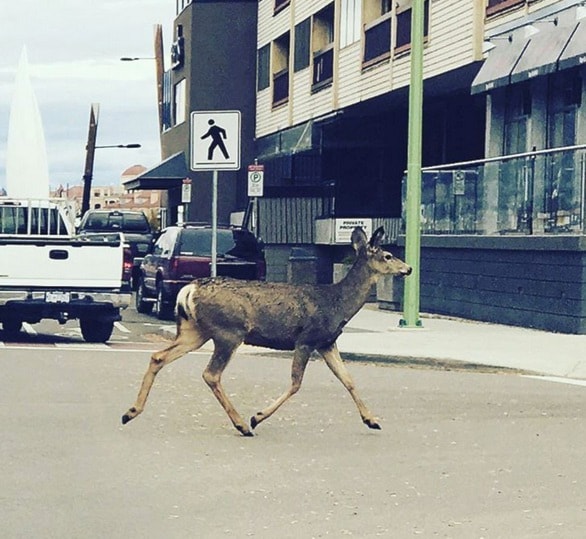The tale of a cougar that found refuge from the snow outside a Kelowna apartment complex Sunday night was just the latest of a growing number of reports of wildlife-human interactions.
While stories of this kind may be shocking, they shouldn’t be unexpected.
The question is how to deal with them as cities grow further into wildlife habitat.
That’s something that Dr. Lael Parrott PhD Director, Okanagan Institute for Biodiversity, Resilience and Ecosystem Services has been looking at for some time, and in the years ahead a collaboration she and her research team are working on with the Regional District of the Central Okanagan,may find a way to strike a balance.
“We have an opportunity to grow in a more intelligent way that will allow for wildlife to coexist with us,” said Parrott, adding that her group is looking at incorporating wildlife corridors into the region’s growth strategy.
“What we’ve done currently is identify where the key movement corridors for wildlife are, and which are the biggest priority.”
One of the areas that’s getting the most focus right now is the valley bottom.
Some creatures traverse the region, in a north to south direction, she explained, and they don’t deal well with the high-elevation, closed-forest areas.
“The valley bottom is an area of concern because there are few places animals can get through,” explained Parrott.
“These creatures need to move around. Our road networks are all connected, but in doing that we’ve disconnected their pathways.”
The cougar story may have highlighted that issue.
Predators, like cougars, explained Parrott, tend to follow deer. Deer travel through the valley bottom because the snow is lighter and they’re able to forage more effectively.
When predators pursue them, they’re bound to end up in conflict with communities, like the cougar who ended up being euthanized.
Bears are in a similar predicament, though they’re hunting garbage not deer.
“For every one per cent increase in urban area, we have a 90 per cent chance of any given bear becoming a conflict bear,” said Parrott.
“We are moving into the animal spaces and they don’t have anywhere else to go. Many animals, like bears are territorial, so if we expand in to their areas they can’t leave because other forested areas are already taken over by other bears.”
In time the landscape becomes urban enough for animals move out.
The corridor could help stop that.
“What we are looking at is maintaining wildlife corridors through the valley,” she said.
“That means creating ways for wildlife to move through and get around Kelowna — a green space for those creatures.”
That will allow for fewer interactions.
An example of a community working in tandem with existing wildlife is in Canmore.
There’s a golf course in that community that’s fenced during the day, then opened up at night so animals can pass through freely.
Coming up with plans like those is years in the offing, but Parrott said that there’s enough time in the Okanagan to create a plan for humans and creatures to live in harmony, unlike what’s happened in more urbanized areas like the suburbs of Vancouver.
In the meantime, Parrott said it’s important for everyone to do their part to reduce human/animal interactions.
That includes keeping garbage away from bears and fruit trees free of old fruit.
The cougar incident may not have been as easy to mitigate, though residents of the apartment building did a good job, said RCMP.
“Clearly this situation ended in the best possible way”, said Const. Steve Holmes.
“People were prudent in leaving the cougar alone and the Conservation Officers did a terrific job in dealing with this beautiful but dangerous animal, protecting both her and the public in the process.”
Upon further examination the cat was found to be diseased and put down.
